
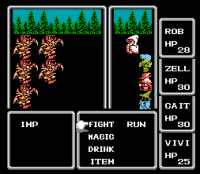
| |
Not the prettiest thing ever... but what do you expect? It's 1987!!
|
Back in 1987, there was a small Japanese software
company called Square. At that time it was known for a nifty arcade
game called Rad Racer, which had been a hit on Nintendo's
cutting-edge NES console.
Then the company released its first role-playing title, Final Fantasy.
Role-playing titles were popular in the Land of the Rising Sun, but
with the market dominated by the Dragon Quest series from Enix,
nobody was expecting much. They couldn't have been more wrong.
The boffins at Square had packed an entire would on to
a 2Mb NES cartridge. Players were transported to a mystical
land where the powers of the four elements were bound and controlled by four
crystal orbs. Unfortunately, the orbs were fading and an evil
darkness was spreading across the globe. Vicious pirates ruled the
seas, evil creatures crept though the shadows and demons stirred in the
depths of the earth. The ancient prophecy of Lukahn was coming to
pass, and only the coming of the four heroes he foretold - known as the
Light Warriors - could save the world from evil forces. When the
mysterious Garland kidnapped the daughter of the King of Coneria
(the dream city), four warriors were summoned to his court.
Each young hero held a strange orb they had owned since childhood...
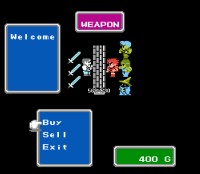
|
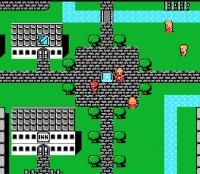
| |
No character development to talk of...
|
... but it was a big hit and advanced for its time.
|
Although primitive by today's standards, at the time of its release Final Fantasy
was a revelation. The graphics were stunning, the music was incredible
and it was fantastic to play. Resplendent with a richly detailed plot,
a clever game system, a vast gaming world, and hundreds of monsters, spells,
weapons, armours and other special items, Final Fantasy was a big
hit in Japan.
The game system was different to the subsequent Final Fantasy titles.
Rather than having fixed characters, the players chose from
six classes - Fighter, Thief, Black Belt, or White, Red and Black
Mages - to create a party of four heroes. This aside, many other
elements of the game made it to future releases.
It took three years for Final Fantasy to reach North America, but eventually it
appeared in 1990 and enjoyed significant, if not incredible, success.


| |
More plot-orientated, FF II was a hit in Japan.
|
After the critical acclaim and success of Final Fantasy, it seemed
inevitable that a sequel would appear. Final Fantasy II arrived in
1988. In what was to become the norm for Final Fantasy games, though,
Final Fantasy II wasn't a sequel in the usual sense of the word.
Rather, it was a unique game in its own right, linked to
its predecessor by common elements in the game system and gameworld.
Another 2Mb NES cartridge, Final Fantasy II was a story of rebellion
against a dark, oppressive, ruling power, foreshadowing the themes
of Final Fantasy VI and VII. The power-hungry Emperor of the
Paramekian Empire had turned to dark magic to summon evil monsters
in his bid to rule the world. The Kingdom of Phin struggled against
these hordes, but was eventually overrun. In the aftermath of Phin's
terrible defeat, four warriors trying to escape the carnage were
attacked by Imperial Horsemen and cut down. Saved from death
by the healer Minh, three of the companions found themselves
caught up in the rebellion being organised by Princess Hilda of Phin.
Graphically and musically similar to Final Fantasy, Final Fantasy II
boasted an even more complex and intriguing plot,
together with a similarly huge range of weapons, armour, spells,
monsters and all the other bits and pieces that have since come to
be expected from a Final Fantasy game. Although not as much
of a shock to Japanese gamers - Final Fantasy, after all, had
demonstrated Square's enviable talent for designing role-playing
games - it was another hit.
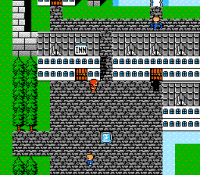
|
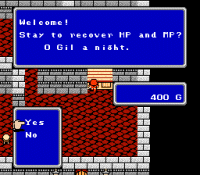
| |
FF II Never made it to western shelves because of
difficulties between Nintendo and Square...
|
...and yet the English translation was just about complete.
|
The most significant change to Final Fantasy II was that there
were no character classes or experience levels. Instead, the
characters improved on various areas by doing things
connected to them - hitting monsters with a sword gained
fighting ability, for example, while taking lots of
damage in a fight led to increases in hit points.
Final Fantasy II put you in charge of a group of
four characters, just like before, but this time
there were three fixed heroes (Frionel, Maria and Guy), all tied
into the plot. There was also one 'slot' for an extra member, which
was filled by different characters as the game progressed - a
concept used in most of the following Final Fantasy games.
In addition to sharing many spells, weapons and monsters with
its predecessor, Final Fantasy II introduced some new ones
to the series. Chocobos made their first appearance, as did
the huge sea monster, Leviathan. As with the dragon
Bahamut in Final Fantasy, though, Leviathan was present as
an actual monster - one that had a habit of eating your ship -
rather than as a 'summon' spell. Likewise, Bombs and
Behemoths made their debut in Final Fantasy II. In addition
to introducing some of the spells that have since become
regular features of Final Fantasy games - including Ultima,
Meteor, Toad and Mini - this was also the first game in the
series to introduce Magic Points system for casting spells.
Final Fantasy II was only released in Japan.


|

